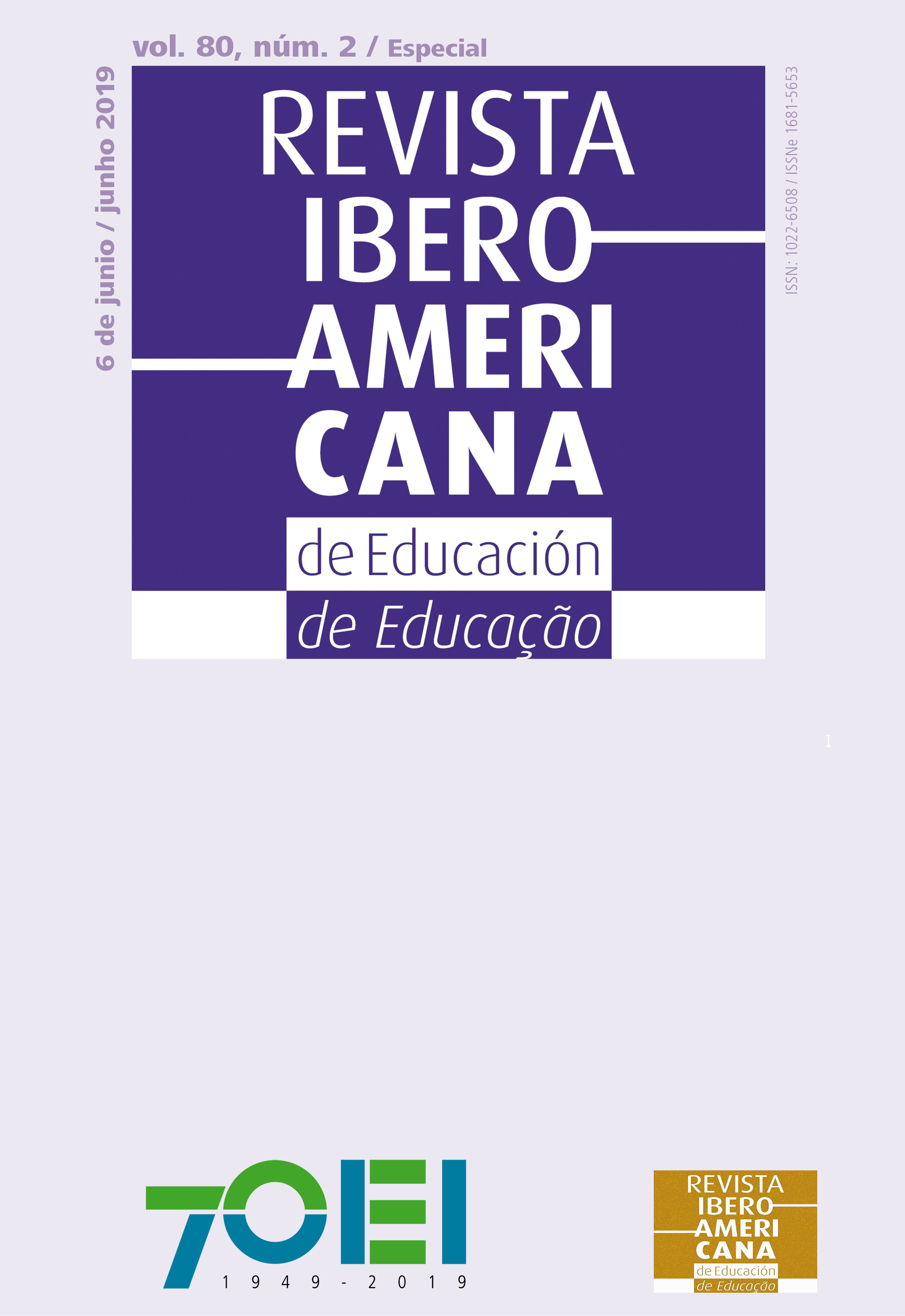Analysis of competencies in Higher Education through Flipped Classroom
DOI:
https://doi.org/10.35362/rie8023407Keywords:
flipped classroom; learning; higher education; university classroom; teaching methods; university teachingAbstract
El proceso de enseñanza-aprendizaje en la universidad exige una continua adaptación a las nuevas propuestas metodológicas. Las clases magistrales han dado paso a estudiantes activos, abiertos a desarrollar las competencias necesarias para su futuro profesional. El modelo flipped classroom adquiere mayor importancia en las aulas universitarias por su enfoque constructivista, trasladando el foco del profesor al alumno. Se describen algunos de los aspectos más relevantes de este modelo de aprendizaje a partir de una revisión bibliográfica. Los resultados están en línea con la búsqueda de capacidades como la autonomía, el análisis interpretativo y la autocrítica.
Downloads
References
Acaso López-Bosch, M. (2013). rEDUvolution: hacer la revolución en la educación. Grupo Planeta (GBS).
Andrade, E. y Chacón, E. (2018). Implicaciones teóricas y procedimentales de la clase invertida. Pulso. Revista de Educación, (41), 251-267. Recuperado a partir de https://bit.ly/2Mc5Xvd
Angelini, M.L. y García-Carbonell, A. (2015). Percepciones sobre la integración de modelos pedagógicos en la formación del profesorado: la simulación y juego y el flipped classroom. Education in the Knowledge Society, 16(2), 16-30. Disponible en: https://bit.ly/2If85gD
Angelini, M.L. y García-Carbonell, A. (2019). Enhancing students’ written production in English through flipped lessons and simulations. International Journal of Educational Technology in Higher Education, 16(1), 2.
Artal, J.S., Casanova, O., Serrano, R. y Romero, E. (2017). Dispositivos móviles y Flipped Classroom. Una experiencia multidisciplinar del profesorado universitario. Edutec. Revista Electrónica de Tecnología Educativa, 59, 355. https://doi.org/0.21556/edutec.2017.59.817 .
Bergmann, J. y Sams, A. (2012). Flip your classroom: Reach every student in every class every day. Washington, DC: International society for technology in education/ISTE.
Bergmann J. y Sams A. (2014). Dale la vuelta a tu clase. Madrid: Editorial SM.
Cabrera, V.A. (2005). El concepto calidad en la educación universitaria: clave para el logro de la competitividad institucional. Revista iberoamericana de Educación, 36(12), 1-7.
Díaz-Barriga, Á. (2011). Competencias en educación. Corrientes de pensamiento e implicaciones para el currículo y el trabajo en el aula. Revista Iberoamericana de Educación Superior, II (5), 3-24.
García, R., Traver, J. y Candela, I., (2001). Aprendizaje cooperativo. Fundamentos, características y técnicas. Madrid: CCS.
Gutiérrez Martén, A., Palacios Picos, A. y Torrego Egido, L. (2010). Tribus digitales en las aulas universitarias. Comunicar, 17(34), 173-181.
Hamdan, N., Mcknight, P., Mcknight, K. y Arfstrom, K.M. (2013). A Review of Flipped Learning. Flipped Learning Network, 1-4.
Hao, Y. (2016). Exploring undergraduates’ perspectives and flipped learning readiness in their flipped classrooms. Computers in Human Behavior, 59, 82-92. https://doi.org/10.1016/j.chb.2016.01.032.
Herreid, C.F. y Schiller, N.A. (2013). Case studies and the flipped classroom. Journal of College Science Teaching, 42(5), 62-66.
Huber, G.L. (2008). Aprendizaje activo y metodologías educativas. Revista de Educación, 59, 59-81.
Johnson, D.V y Johnson, R. (1991). Learning together and alone. Cooperative, competitive and individualistic learning. Needham Heights, Allyn and Bacon.
Kim, M.K., Kim, S.M., Khera, O. y Getman, J. (2014). The experience of three flipped classrooms in an urban university: an exploration of design principles. The Internet and Higher Education, 22, 37-50.
Lluch, C.J., Peñalver, M.J.P. y Codesal, E.S. (2014). Investigación del impacto en un aula de matemáticas al utilizar flip education. In Pensamiento matemático, Universidad Politécnica de Madrid, 4(2), 9-22.
Kagan, S. (1994). Cooperative Learning. San Clemente, CA: Kagan.
Lage, M.J., Platt, G.J. y Treglia, M. (2000). Inverting the classroom: A gateway to creating an inclusive learning environment. The Journal of Economic Education, 31(1), 30-43.
Manresa, S.T. (2018). Flipped Classroom: Un modelo pedagógico eficaz en el aprendizaje de Science. Revista Iberoamericana de Educación, 76(1), 9-22. Recuperado a partir de https://doi.org/10.35362/rie7612969
Mason, G.S., Shuman, T.R. y Cook, K.E. (2013). Comparing the Effectiveness of an Inverted Classroom to a Traditional Classroom in an Upper-Division Engineering Course. IEEE Transactions on Education, 56(4), 430-435.
Mok, H.N. (2014). Teaching tip: The flipped classroom. Journal of Information Systems Education, 25(1), 7.
Ng, E.M. (2018). Integrating self-regulation principles with flipped classroom pedagogy for first year university students. Computers & Education, 126, 65-74.
Ni, M., Zhen, L., Xie, Y., Long, H., Zheng, X. y Li, W. (2015). A study of an e-schoolbag supporting flipped classroom model for junior mathematics review class. In International Conference on Hybrid Learning and Continuing Education (243-254). Springer, Cham.
Phillips, C.R. y Trainor, J.E. (2014). Millennial students and the flipped classroom. Proceedings of ASBBS, 21(1), 519-530.
Prieto, L. (2007a). El aprendizaje cooperativo. Madrid: PPC.
Prieto, L. (2007b). La enseñanza universitaria centrada en el aprendizaje. Barcelona: Octaedro/ICE UB.
Rotellar, C. y Cain, J. (2016). Research, Perspectives, and Recommendations on Implementing the Flipped Classroom. American Journal of Pharmaceutical Education, 80(2), 34.
Sánchez, V.G. y Arrufat, M.J.G. (2016). Modelo de análisis de metodologías didácticas semipresenciales en Educación Superior. Educación XX1, 19(1). https://doi.org/10.5944/educxx1.15577
Thai, N.T.T., De Wever, B. y Valcke, M. (2017). The impact of a flipped classroom design on learning performance in higher education: Looking for the best “blend” of lectures and guiding questions with feedback. Computers & Education, 107, 113-126. https://doi.org/10.1016/j.compedu.2017.01.003
Touchton, M. (2015). Flipping the Classroom and Student Performance in Advanced Statistics: Evidence from a Quasi-Experiment. Journal of Political Science Education, 11(1), 28-44. https://doi.org/10.1080/15512169.2014.985105
Tourón, J. y Santiago, R. (2015). El modelo Flipped Learning y el desarrollo del talento en la escuela. Revista de Educación, 368, 196-231. Recuperado de https://bit.ly/1dHH8k7
Vaughan, M. (2014). Flipping the learning: An investigation into the use of the flipped classroom model in an introductory teaching course. Education Research and Perspectives, 41, 25-41. Recuperado de https://bit.ly/2KeJSt4
Zañartu, L.M. (2003). Aprendizaje colaborativo: una nueva forma de diálogo interpersonal y en red. Contexto Educativo, 28.
How to Cite
Downloads
Published
Issue
Section
License
Any authors who publish with this journal accept the following terms:















